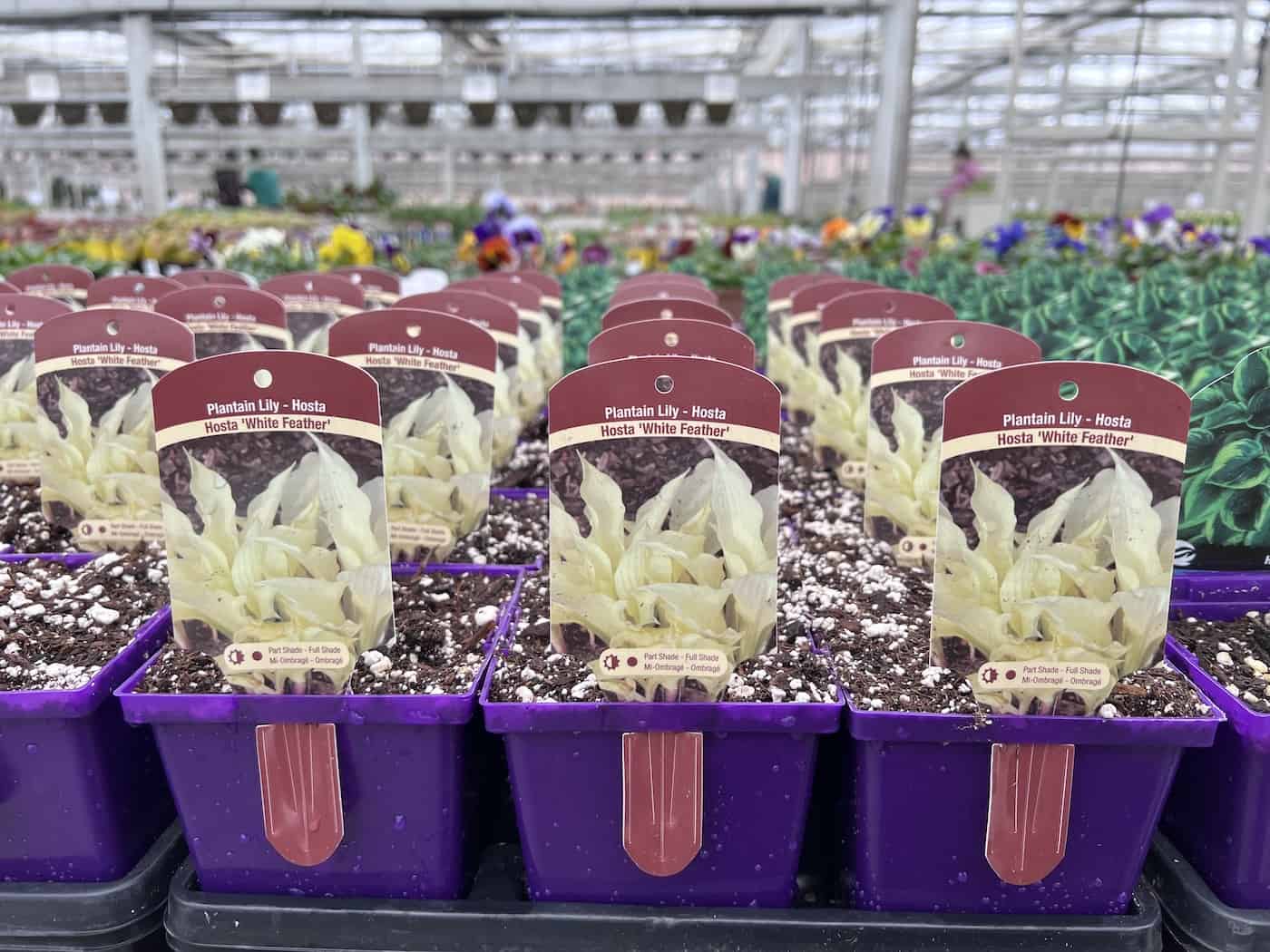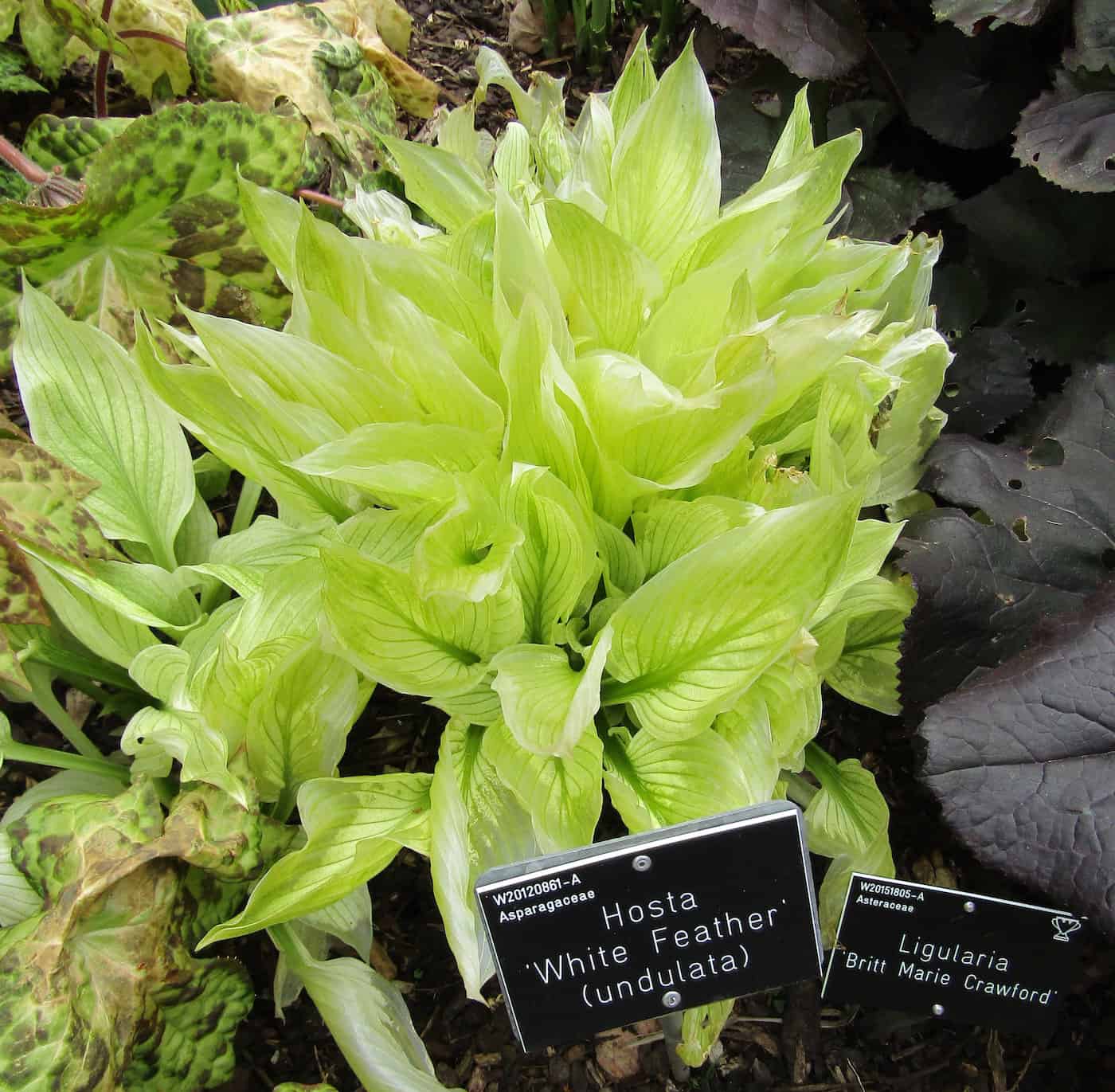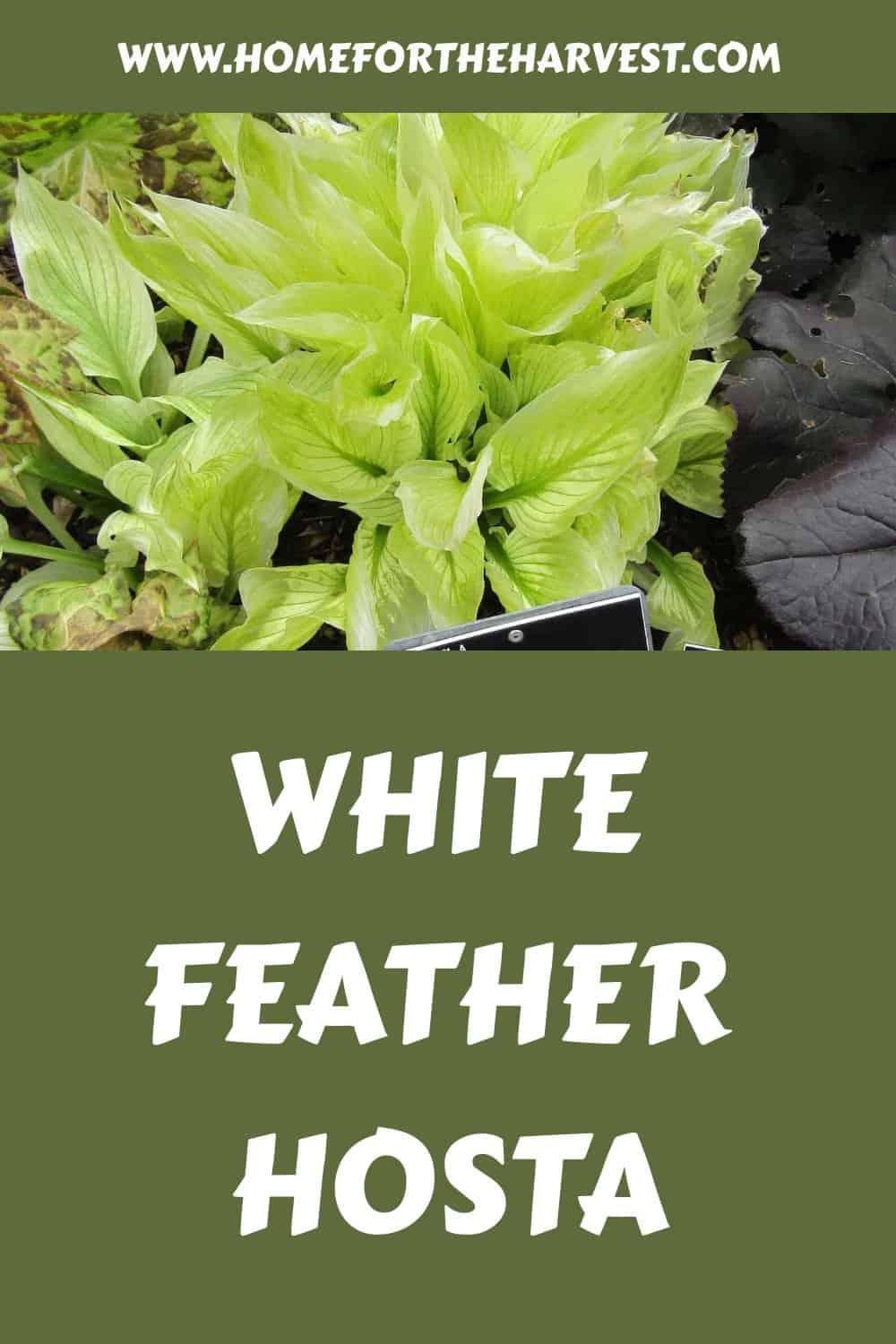White Feather hosta is a specialty hosta cultivar known for its near-white leaves. This small-medium variety grows best in full shade, as direct sunlight can burn the pale foliage. While the leaves are white at the beginning of the season, they do become more of a blended pale green tone by late summer. Hosta ‘White Feather’ grows about 2 feet wide at maturity, has lavender flowers in midsummer, and can be grown in zones 3-9.
White Feather hosta basics
The White Feather hosta is a popular hosta variety with white leaves that age into a creamy green blend by late summer. This variety is known for being one of the more difficult hosta varieties to grow, as it is quite particular about sunlight and soil requirements.
White Feather hostas typically take 4-5 years to become well-established in the landscape. Also, note that it takes several years of growth before the pale white leaf color develops reliably. This variety is not large in the landscape, usually growing to about 2 feet wide at maturity with upright leaves that typically reach 18-20 inches tall.

When to plant White Feather hosta
White Feather hosta should be planted in the spring or fall for best results. That said, it can be planted any time of year as long as the soil is not frozen and the plant is watered regularly.
How to plant White Feather hosta
When planting white feather hosta, it is important to choose a location in full shade. The plant also prefers moist, well-drained soil. It is hardy in zones 3 through 9. White Feather Hostas can grow to be about 18-20 inches tall and 18-24 inches wide. Be sure to prepare the soil for the hosta prior to planting.
Sunlight requirements for White Feather hosta
White Feather Hosta requires a full-shade planting location. Avoid planting areas that receive direct sunlight, as direct sunlight burns the tender leaves.

Soil requirements for White Feather hosta
White Feather hosta requires soil with good drainage to thrive. This plant is not tolerant of wet or poorly-drained soil conditions. Consider amending your soil with organic matter to improve drainage before planting if it is heavy clay.
Hosta plants grow best in soil with a slightly acidic pH level. A pH of 6 is optimal, but this plant is tolerant of neutral and slightly alkaline pH levels, especially if a soil acidifier like sulfur or gypsum is incorporated into the soil prior to planting.
Watering requirements
Watering is one of the most critical aspects of plant care and one of the most common mistakes gardeners make. How often you need to water your plants depends on a variety of factors, including the climate, the soil type, and how much sun the plant receives.
In general, newly planted hostas will need to be watered more frequently than established plants. White feather hostas that are growing in full sun will require more water than those in partial shade.
The best way to determine how often to water is to check the soil before watering. If the top few inches of soil are dry, it’s time to water. The easiest way to water these hostas is with a drip irrigation system.
Fertilizing hosta plants
White feather hostas do best when fertilized with a slow-release fertilizer that contains nitrogen, phosphorus, and potassium. These nutrients are essential for healthy plant growth, and hostas are heavy feeders.
There are many different brands of fertilizer available, so be sure to read the labels carefully to find one that is right for your white feather hostas.
Pruning hostas
Hostas require minimal pruning. Remove damaged leaves during the growing season to keep the plant from looking unsightly. The flower stalks can also be removed before or after they bloom. The leaves can be cut back to the ground after the aboveground foliage is killed by a hard frost in the fall.
Pests affecting hostas
The most common pests affecting White Feather Hostas are slugs and snails. These pests are attracted to the plant’s succulent leaves, which they eat.
There are a few different ways to control these pests. You can use traps, baits, or barriers. slug traps can be made by placing a piece of cardboard or plywood on the ground near the white feather hosta. The traps should be checked daily and the slugs removed.
You can also bait these pests with products that contain iron phosphate. This substance is poisonous to slugs and snails.
Barriers such as diatomaceous earth or copper tape can also be used to keep these pests away from white feather hostas.
Diseases affecting hostas
The most common diseases affecting White Feather Hostas are powdery mildew and rust. These diseases are caused by fungi that thrive in humid conditions.
To prevent these diseases, water White Feather Hostas at the base of the plant rather than on the leaves. This will help to keep the leaves dry.
If powdery mildew or rust does appear, it can be treated with a fungicide. Be sure to follow the directions on the label carefully.
White Feather Hostas are stunning plants that add interest and texture to the shade garden. They are easy to care for and require minimal pruning.
Companion plants for hostas
White Feather Hosta is a fantastic variety to pair with other plants in the shade garden. You can interplant it with other specialty hosta varieties like Abiqua Drinking Gourd Hosta, Empress Wu Hosta, or Fire & Ice Hosta (be sure to compare the final height prior to situating the hostas in the garden). Other plants that pair well include ethereal ferns and astilbe, which add a soft contrast to the pale leaves of White Feather. Here is a comprehensive list of hosta companion plants.






